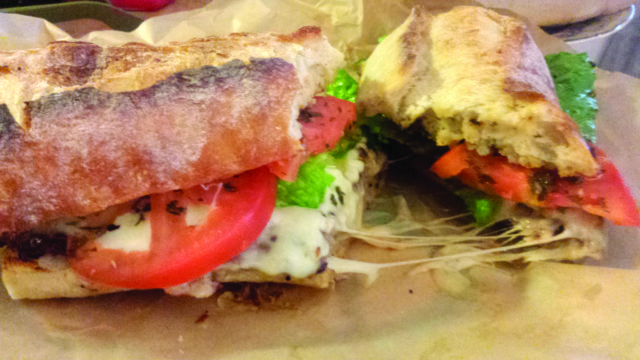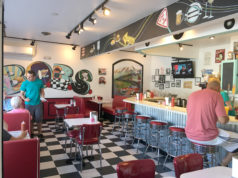
A quick word of introduction: This will be, as are most things in life, a work in progress. But the goal of this column is pretty simple: Stop and smell the bacon. You know, stop and smell the roses, but in a culinary sense. I’ll use each column to take a concentrated look at a single dish. I’ll be gallivanting (as my grandmother would say) around Boulder County in search of food I love and stories to tell about that food. I can’t say for sure what this column will look like from week to week, but I hope you’ll join me on the journey.
Let’s talk about Argentine food.
To talk about Argentine food, we need to talk about Argentine culture, and to talk about Argentine culture we need to talk about immigrants.
To say that Italians had a significant influence in Argentina might be a gross understatement — Argentina’s Italian population is the second largest in the world outside of Italy, numbering some 25 million people.
Italians began to immigrate to Argentina in the early 1800s, just after Argentina won its independence from Spain. Somewhere around 1815, the Italian states were just beginning the process of unification, and the nascent nation was impoverished, enduring widespread unemployment and political turmoil.
Argentina looked like a chance at a new beginning for many Italians.
So they flocked to the Latin American country, often settling in the capitol of Buenos Aires where they first arrived, but also throughout Argentina’s provinces, in Córdoba, Santa Fe, Entre Ríos, La Pampa and Tucumán.
Today there are as many as 1.5 million Italian speakers in Argentina, and some two-thirds of the Argentine population can claim to have decedents from lo stivale — “The Boot.”
(Side note: One of my favorite musicians is Argentine, the late Gustavo Cerati. In writing this column I thought how Italian his surname sounds and decided to check and yes, his father’s family came from the Lombard region of Italy. OK… gracias totales.)
Italy’s imprint is everywhere in Argentina. Even their Spanish is famous for its Italian-like sound. In 1998, at the Summit of the Americas, a foreign minister quipped, “Argentines are Italians who speak Spanish” (the end of that quote is, “who think they are British,” and the whole comment arose because former president of Argentina Carlos Saul Menem arrived late for the official photo session, making 33 heads of state, including President Clinton, wait. But I digress…).
And of course Italy can be seen clearly in Argentine cuisine, which brings me to the point of this little history lesson — milanesa.
Milanesa is kind of the unofficial dish of Argentina. It consists of a thinly sliced meat fillet — beef, chicken, veal or pork, and occasionally eggplant or a soy protein — battered in egg, seasoned, breaded and fried in a shallow pan of oil. The meat is often served with some cheese melted on top and mashed potatoes on the side, or, as we’re about to discuss, in sandwich form — sanguche de milanga.
Boulder is nearly 6,000 miles from Buenos Aires, but a little slice of Argentina sits right on the corner — el rincón — of Folsom and Arapahoe. This week I sat under the shade of Rincon Argentino’s patio awning in the dewy aftermath of a thunderstorm. From this perfect little corner you can see the Flatirons and watch folks cruise north down the hill of Folsom on their bikes. It’s easy to feel transported, suddenly surrounded by Spanish speakers among the colorful and inviting accouterment of the restaurant.
The little eatery is famous, and rightly so, for their amazing empanadas (another dish with great history), but this day I wanted the unofficial dish of Argentina.
Rincon’s milanesa de carne is a classic sanguche de milanga, with thinly sliced Argentine steak, breaded and seasoned with oregano, covered in melted mozzarella cheese and topped with lettuce and tomato slices. It’s all placed lovingly between the slices of a crusty baguette. I added a bit of chimmichurri because I love life.
What makes Rincon’s milanesa so delicious is their attention to detail — the best cuts of meat for milanesa are lean and lack sinew, so the meat curls up around the edges as it’s cooked, and that’s just what you get at Rincon Argentino. The baguette provides the perfect crustiness against the chewy beef and gooey layer of cheese, and while the sandwich’s internal ingredients often want to escape their bready enclosure, half the fun of eating it is shoving it back together.
Part of the allure of Rincon Argentino is the sense of home one gets while there. Like Italians, Argentines have a reputation for their love of food. An invitation to a home-cooked meal is an expression of friendship and trust.
They say the best place on Earth to eat a sanguche de milanga is at someone’s mother’s house in Buenos Aires. As a family run business, I’m more than a little sure Rincon Argentino is the North American version of just that.














